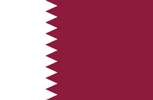Acne
Hair Technologies
Face-lifting & Skin tightening
Skin Rejuvenation
Skin Resurfacing
Pigmentation & Vascular Removal
Body Shaping
Vaginal Rejuvenation & SUI
Injectables
Dermatology
Acne Monotherapy
Hair removal
Fine hair removal
Hair bleaching
Fine lines and wrinkles
Skin Sagging
DermaFacial
Pores reduction
Stretch marks
Dermal pigmentation
Tattoos
Vascular lesions
Body contouring
Localized contouring
Vaginal tightening
Vaginal rejuvenation
Stress urinary incontinence
Inflammatory Acne
Pain Management
UV phototherapy
Medical furniture & accessories
Treatments & diagnostic
Hair removal
Fine hair removal
Hair bleaching
Fine lines and wrinkles
Skin Sagging
DermaFacial
Texture & Laxity
Toning
Pores reduction
Hypertrophic scars
Acne/Atrophic scars
Stretch marks
Epidermal pigmentation
Dermal pigmentation
Tattoos
Vascular lesions
Body contouring
Localized contouring
Vaginal tightening
Vaginal rejuvenation
Stress urinary incontinence
Inflammatory Acne
Pain Management
UV phototherapy
Medical furniture & accessories
Treatments & diagnostic
FAQs
Is fractional CO2 ablation a risky treatment?
No, when using the recommended guidelines CO2 is safe & has the highest efficacy of all fractional lasers.
What to expect after eCO2 plus treatment?
Skin rejuvenation has low downtime with transient erythema & peeling. Ablative treatments will result in heat sensation for 2 hours & red stamps which will turn into a bronze color and peels off in the next few days, exercising or alcohols or washing skin should be avoided during the healing time.
Is there any pain with eCO2 plus treatment?
eCO2 skin rejuvenation treatments are easily tolerated, skin resurfacing treatments are usually performed with the aid of numbing cream & are well tolerated by patients. eCO2 is considered the most tolerated in its category due to its low beam diameter.
Why is eCO2 the right choice for skin resurfacing?
There is no superior efficacy than what eCO2 plus provides. Scars improvement & skin tightening are difficult to be achieved & most physicians understand that full highest improvement rate isn't possible, hence getting the highest clearance is what makes eCO2 the right choice.
How many sessions needed in eCO2 program?
The program usually starts from 3 sessions & the number increases subject to the physician evaluation of the patient condition.
Can I use eCO2 plus for hairy areas?
eCO2 plus laser is only absorbed by water & hence it isn't absorbed by melanin or hair.
What are the precautions & contra-indications of fractional resurfacing?
Excessive exercising, alcohol-containing cosmetics & skin irritation should be avoided after the treatment. Retinol, AHA & isotretinoin shouldn't be used without informing the treating physician.
How long is the downtime after the treatment?
Skin resurfacing usually needs a downtime between 1-2 weeks, while skin rejuvenation has a low downtime & the patient can return to shortly to their daily activities after the treatment with being cautious of sun exposure.
Dubai
-
Contact
- Contact us
- Careers
- Offices










